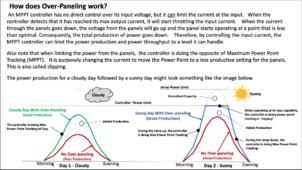SunRunSux
New Member
I'm sure this has been brought up before, but I have a 15-panel system which is rated at ~4.9 kWp, but I've never seen anything above 3.9 kW at any given point (so ~20% under peak). This seems like an obvious issue to me, but I'm wondering what others have experience with their home setups. I'm in a desert community, so there are plenty of optimal performance days. I've also spoke to SolarEdge several times and they informed me my inverter was only rated for 3.8 kW, so it seems like a limitation on my inverter? I'm surprised my solar installer would even build a system with obvious limitations, but I've also heard that a 3.8 kW inverter can be overbuilt and accept more than rated?! I've been going back and forth with technical support, but I'd like to get some more data from other home users to better inform myself. I do own my system as well.
SolarEdge Inverter - SE3800H-USMNBBL14
7x Jinko JKM320M-60HBL panels
8x JA Solar JAM60S17-325/MR as well
SolarEdge Inverter - SE3800H-USMNBBL14
7x Jinko JKM320M-60HBL panels
8x JA Solar JAM60S17-325/MR as well





